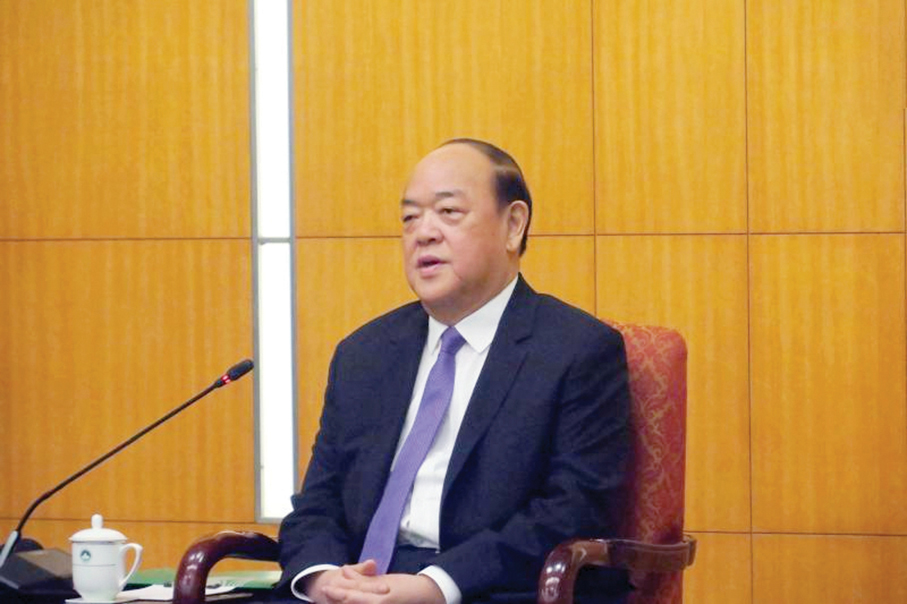Analysis
BEIJING – Those shorting China due to slower GDP growth in the third quarter (Q3) are misleading the market and could miss future opportunities, as the Chinese economy remains resilient, with new growth drivers booming and potentials yet to be fully unleashed.
China’s GDP grew 4.9 percent year-on-year in Q3, slower than the growth of 18.3 percent in Q1 and 7.9 percent in Q2. In the first three quarters, the mainland logged a 9.8 percent GDP expansion, well above its annual growth target of “over 6 percent,” data from the National Bureau of Statistics (NBS) shows.
“It is not just China, but the whole world that faces a slower economic recovery in Q3 compared with Q2,” said Yao Jingyuan, a research fellow at the Counsellors’ Office of the State Council.
In its October forecast, the International Monetary Fund (IMF) said that the Chinese economy will grow by 8 percent in 2021, while the growth of the world economy will moderate to 5.9 percent, both down by 0.1 percentage points from July’s forecast.
The IMF has also lowered its projection for advanced economies from 5.6 percent to 5.2 percent.
The 8 percent projection is higher than that for the world economy and major economies, indicating that “the global community is upbeat about the prospects of the Chinese economy,” said NBS spokesperson Fu Linghui at a press conference.
The projection also reflects the strong resilience and huge potentials of the Chinese economy, considering a high comparison base last year, Fu noted.
Admittedly, challenges including a power crunch, a resurgence of COVID-19 cases and severe floods in certain regions could weigh on the Chinese economy, but experts said that the impact is short-lived and can be solved.
“China’s power shortage is only temporary, and its impact on the economy is under control,” Fu said, citing NBS data showing that the country’s power generation accelerated in September, climbing 4.9 percent year on year last month compared with a year earlier.
“Such short-term challenges do not indicate that China’s economy lacks internal growth impetus,” said Yao, adding that the country is capable of stabilizing the economy.
BRIGHT SPOTS
In the first three quarters, the fast expansion of new growth drivers such as high-tech manufacturing continued despite multiple headwinds.
The output of the high-tech manufacturing sector jumped 20.1 percent year on year in the first nine months, faster than the growth pace of the overall industrial output, NBS data shows.
Specifically, the output of new-energy vehicles logged a sharp increase of 172.5 percent in the January-September period, while that of industrial robots and integrated circuits surged 57.8 percent and 43.1 percent, respectively.
On the demand side, China’s retail sales of consumer goods went up 16.4 percent year on year in the first three quarters of this year.
The job market, a key pillar for personal income and consumption growth, continued to be generally stable, with the country creating 10.45 million new jobs in its urban areas in the January-September period, achieving 95 percent of the annual target.
Moreover, foreign investors continued to expand their footprints in China, with foreign direct investment into the Chinese mainland, in actual use, rising 22.3 percent year on year in the first eight months of the year.
Looking forward, the Chinese economy could still maintain the relatively stable growth momentum in Q4 despite downward pressure, said Xu Xianchun, a professor at the School of Economics and Management at Tsinghua University.
The country’s policymakers are actively coping with the current difficulties, employing measures to boost the electricity supply, incentivize consumption and facilitate foreign trade.
Fiscal policies should be better leveraged to stabilize growth, experts said. “There is still 1 trillion yuan of quotas for special local government bonds to be issued in Q4, which is expected to shore up infrastructure investment,” Xu said.
Efforts should also be made to promote the digital transformation of enterprises, improve the business environment and strengthen support for new business modes, such as cross-border e-commerce and the industrial internet, Xu said. – Xinhua









